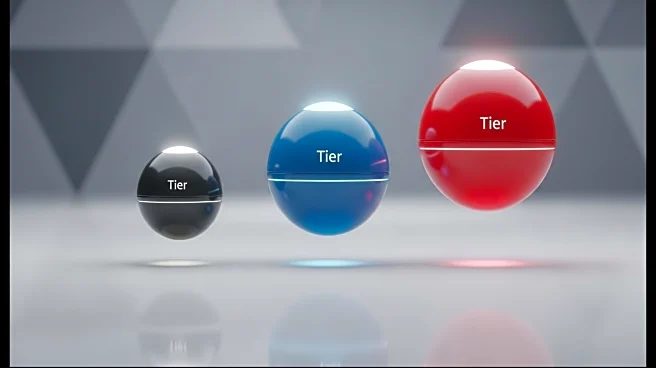What is the story about?
What's Happening?
A major streaming platform has announced a new pricing structure set to take effect in 2025, introducing a three-tier model aimed at offsetting rising content costs. This change comes amidst a backdrop of subscription churn and ad-load experiments that have impacted margins for streaming services. The new pricing model includes a premium tier, which will result in higher costs for top-tier subscribers, affecting family plans and student discounts. The move is expected to force consumers to make quick decisions regarding their streaming subscriptions as billing cycles adjust within weeks. Industry analysts suggest this could lead to increased revenue per user but may also result in higher churn rates among price-sensitive households.
Why It's Important?
The introduction of a tiered pricing model by the streaming platform is significant as it reflects broader industry trends of rising content costs and shifting ad revenues. As platforms seek to extract more revenue per user, consumers may face fewer low-cost options, prompting them to reassess their subscription choices. This development could lead to increased bundling deals and discount windows for new subscribers, as well as more aggressive ad tiers to retain price-sensitive users. The move highlights the ongoing challenges faced by streaming services in balancing content costs with subscriber growth, potentially impacting consumer spending habits and the competitive landscape of the streaming industry.
What's Next?
As the new pricing model rolls out, consumers will need to decide whether to accept higher costs, switch services, or opt for ad-supported tiers. The industry may see a rise in bundling deals and discount offers as platforms attempt to retain subscribers. Additionally, niche services could gain traction as viewers seek more affordable options. The streaming platform's decision may prompt other services to adopt similar pricing strategies, further influencing consumer behavior and market dynamics in the streaming sector.
AI Generated Content
Do you find this article useful?














